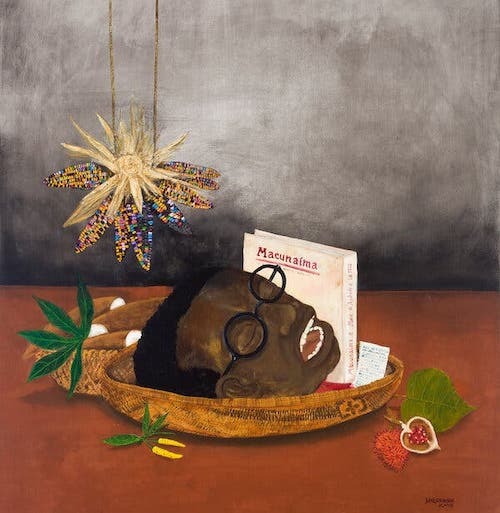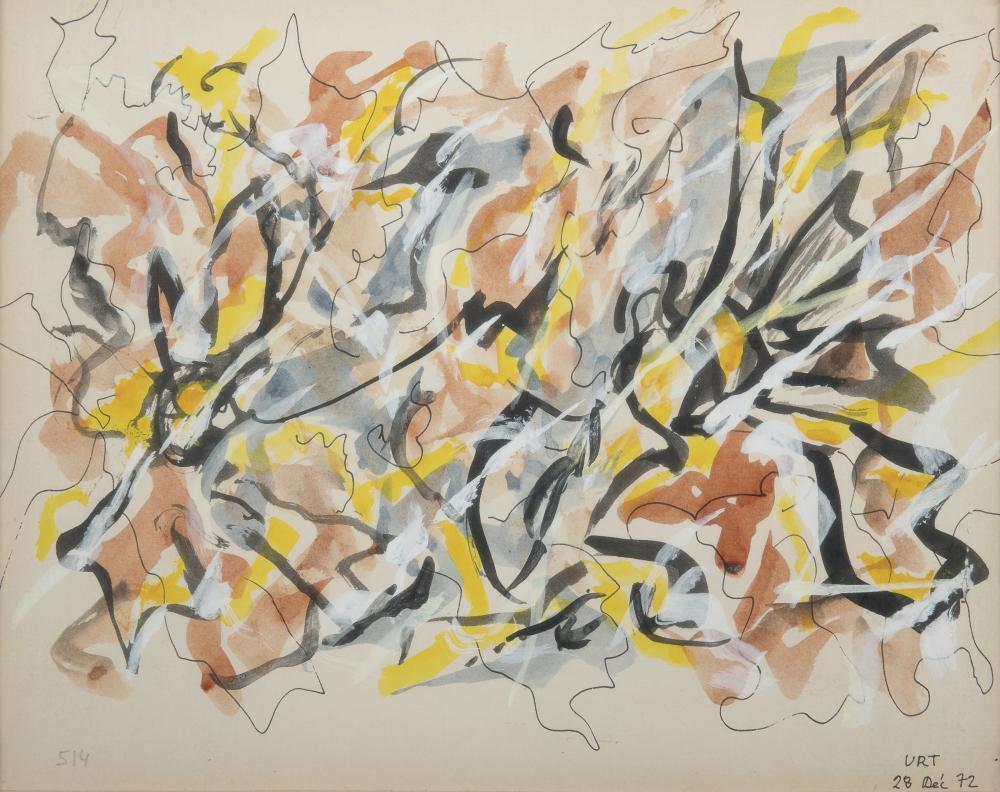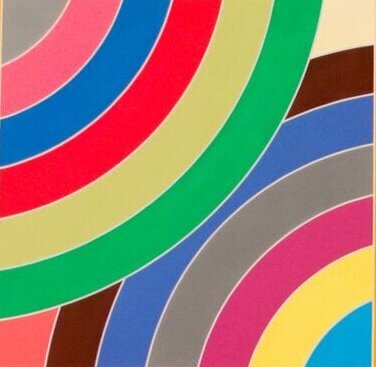“Autonomy of art, yes; but not the closure of art:” José Carlos Mariátegui on Modernism and the Avant-Gardes
translated by:
Tavid Mulder
Reality and Fiction (1926)
Fantasy has been recovering its status and position in Western literature. Oscar Wilde seems to be a master of the contemporary aesthetic. His current authority depends on neither his work nor his life but on his conception of things and art. We live in an epoch that favors his paradoxes. Wilde claimed that the London fog had been invented by painting. It is not true, as they say, that art copies nature. Nature copies art. In our moment, Massimo Bontempelli takes this thesis to its limits. According to a bizarre Bontempellian theory, drawn from summer meditation in an alpine town, in the beginning the earth was almost exclusively mineral. Only man and stone existed. Man sustained himself on mineral substances. But his imagination discovered the other two realms of nature. Artists imagined trees and animals. Plants and beings, having existed ideally in art, began to really exist in nature. With the planet furnished in this way, man’s imagination created new things. Machines appeared. Mechanical civilization was born. The earth was electrified and mechanized. And, after mechanization reached its height, the process was repeated in reverse. Minerals, vegetables, machines, etc., became reabsorbed by nature. The earth gradually became petrified and mineralized to the point that it returned to its primitive state. This evolution has been completed many times. Today the world is once again in a period of mechanics and mechanization.
Bontempelli is one of the most fashionable men of letters in contemporary Italy. A few years ago, when realism dominated in Italian literature, his book would have had a different fate.
Bontempelli, who was initially more or less a classicist, would not have written it. Today he is a Prandellian; yesterday he would have been a D’Annunzian.
A D’Annunzian? But don’t we find more fiction than realism in D’Annunzio? Fantasy resides more in the external than in the internal of D’Annunzio’s works. He dressed his novels in Byzantine fantasy, but their skeleton did not differ much from naturalist novels. D’Annunzio attempted to be aristocratic, but he didn’t dare to be implausible. By contrast, in a novel stripped of decoration and simple in its form, like The Late Mattia Pascal, Pirandello presents a case that the critics immediately dismissed as extraordinary and implausible but a few years later it was faithfully reproduced.
In literature, realism alienated us from reality. Realist experience has simply shown us that we can only encounter reality through the path of fantasy. And this has produced a surrealism that is not merely a school or French literary movement but a tendency, a branch of world literature. The Italian Pirandello is a surrealist. The American Waldo Frank is a surrealist. The Romanian Panait Istrati is a surrealist. The Russian Boris Pilniak is a surrealist. It does not matter that they work far away from the surrealist authority wielded in Paris by Aragón, Breton, Eluard, and Soupault.
But fiction is not free. More than unveil for us the marvelous (lo maravilloso), it seems destined to reveal the real to us. When fantasy does not bring us closer to reality, it does not amount to much. Philosophers draw on false concepts to arrive at the truth. Men of letters use fiction for the same purpose. Fantasy only has value when it creates something real. This is its limitation. This is its drama.
The death of the old realism has not prejudiced us absolutely against knowledge of reality. Instead, it has facilitated it. It has liberated us from the dogmas and prejudices that had constrained our knowledge. Sometimes, there is more truth and humanity in the implausible than in the plausible. One of Pirandello’s implausible farces can penetrate more deeply into the abyss of the human spirit than one of Alfred Capus’s plausible comedies. The great Fernand Crommelynck’s Le Cocu magnifique is certainly worth more than all the mediocre French theater of adultery and divorce, including Capus’s L’Adversaire and Carmine Gallone’s La Falena. 1
The prejudice of verisimilitude today seems to be one of art’s greatest obstacles. More moderate artists show themselves to be violently opposed to it. “Life,” Pirandello writes, “which is beautifully full of uncharged absurdities, great and small, has the inestimable privilege of being able to dispense with the verisimilitude that art feels obliged to obey. The absurdities of life must seem plausible because they are true. Those of art must be plausible in order to seem true.”
Freed from this obstacle, artists can throw themselves into the conquest of new horizons. In our days, works are written that wouldn’t be possible without this freedom. Joseph Delteil’s Jeanne D’Arc, for instance. In this novel, Delteil presents us with the maiden of Domrémy conversing naturally and naively with Saint Catherine and Saint Margaret, as if with two girls from the countryside. The miracle is narrated with the same simplicity, with the same candor, of a children’s fable. What is implausible in this novel does not claim to be plausible. And it is in admitting the miracle—this is, the marvelous—in this way, that we approximate the truth about the Maiden. Joseph Delteil’s book offers us a truer and more living image of Joan of Arc than Anatole France’s book.
It is from this new concept of the real that modern literature extracts one of its greatest energies. What causes anarchy is not fantasy in itself. It is the exasperation of the individual and of subjectivism that constitutes one of the symptoms of the crisis of western civilization. The root of its evil cannot be found in the excess of fiction but rather in the lack of a grand fiction that could be its myth and star.
Original publication: José Carlos Mariátegui, Perricholi, Lima, March 25, 1926. Reprinted as: “La realidad y la ficción,” José Carlos Mariátegui, El artista y la época (Lima: Empresa Editora Amauta, 1973).
Taking Stock of Surrealism (1930)
None of the avant-garde literary and artistic movements in Western Europe, contrary to what might be suggested by cheap appearances, has had either the significance or historical content of Surrealism. The other movements have limited themselves to the affirmation of a few aesthetic postulates, to experimentation with some artistic principles.
Italian "Futurism," without a doubt, has been an exception to the rule. Marinetti and his minions claimed to represent, not only artistically but also politically and sentimentally, a new Italy. From a distance, the histrionic megalomania of "Futurism" makes us smile, but perhaps more than any of the other movements, for some time now it has entered the “order” and the academy. Fascism has assimilated it without much effort, a fact that attests not to the digestive power of the black shirt regime but to the fundamental harmlessness of the Futurists. To a certain extent, Futurism has had the virtue of persistence. But, beneath this aspect, it has been a case of longevity, not elaboration or development. In each reappearance, we recognized the old, pre-war Futurism. The wigs, makeup, and tricks have not stopped us from noticing the exhausted voices and mechanical gestures. Having ruled out the possibility of establishing a continuous, dialectical presence for Futurism in Italian literature and history, Marinetti saved it from obscurity by means of noisy rentrées. In short, Futurism was originally corrupted by its taste for the spectacular, this abuse of the histrionic—honest criticism would perhaps concede the excuse that these are typically Italian traits—that condemned it to life in the foreground, to a charmed, fictive role of declamation. The fact that we cannot speak about Futurism without employing theatrical terminology confirms that it is the dominant feature of its character.
"Surrealism" has a different sort of duration. It is truly a movement, an experience. It is no longer at the stage, for instance, when it was abandoned two years ago by those who observed it only with the hope that it would disappear or become silent. Surrealism is completely misunderstood by those who imagine that they know and comprehend it in terms of a formula or a definition from one of its phases. Even at its inception, Surrealism distinguishes itself from other tendencies, from other literary and artistic programs. It was not born fully assembled and perfected from the head of its inventors. It has been a process. Dada is the name of its infancy. If we follow its development closely, we can discover a pubescent crisis. Having reached maturity, it feels its political responsibility, its civil obligations, and it has joined a party, affiliated itself with a doctrine.
And, at this level, Surrealism has behaved in a way that is distinct from Futurism. Rather than release a program of Surrealist politics, it accepts and subscribes to the program of the concrete, current revolution: the Marxist program of proletarian revolution. In the social, political, and economic terrain, it only recognizes the validity of the Marxist movement. It does not occur to Surrealism to submit politics to the rules and taste of art. In the domain of physics, it has nothing to oppose to the facts of science; in the domains of politics and the economy, it considers it childish and absurd to attempt an original speculation based on the facts of art. The Surrealists only exercise their right to nonsense, to absolute subjectivism, in art; in everything else, they behave sensibly, and this is another thing that differentiates them from the scandalous spectrum of precedents, revolutionary or romantic, in the history of literature.
But there is nothing that the Surrealists refuse so much as the voluntary confinement in pure artistic speculation. Autonomy of art, yes; but not the closure of art. Nothing is more foreign to them than the formula l’art pour l’art. The artist is a poor devil if he does not comply with Monsieur Tardieu’s demand to throw a flic 2 into the Seine or to interrupt a speech by Briand. Surrealism denies him the right to take protection in the aesthetic, to not feel what is repugnant and tedious about the work of Mr. Chiappe or the oral anesthetics of pacifism in the United States of Europe. A few dissidents, very few, have defected precisely because of this conception of the unity of man and artist. Responding to the departure of Robert Desnos, who once made numerous contributions to issues of La Révolution Surréaliste, André Breton says: “he thought he could indulge with impunity in one of the most dangerous activities that exists, journalism, and, because of it, failed to respond personally to a handful of serious demands which Surrealism, in the course of its evolution, found itself faced with: for instance, to go along with Marxism or not.” 3
For those of us in this tropical America who associate Surrealism with debauchery, it will be very difficult, if not impossible, to accept this statement: that it is a difficult, arduous discipline. I can temper and moderate it with a careful definition: it is the difficult, arduous search for a discipline. But I insist absolutely on the rare clarity—which snobbism and simulation can neither access nor allow—of the experience and work of the Surrealists.
La Révolution Surráliste has reached its twelfth issue and its fifth year. The twelfth issue opens with what André Breton calls “The Second Manifesto of Surrealism,” a balance-sheet of one part of its operations.
Before discussing this manifesto, I wanted to outline in a few paragraphs the scope and value of Surrealism, a movement that I have followed with an attention that has been reflected in my articles on more than one occasion, not simply sporadically. This sustained engagement, nurtured as it is by the opinions I share with Surrealism and the hope it inspires, confirms that what I will write is faithful to the texts and aims of Surrealism even as I polemicize them. Concerning the twelfth issue, I will add that the text and its tone confirm the character of the Surrealist experience and its display in the magazine. An issue of La Révolution Surréaliste almost always contains an examination of conscience, a new interrogation, a risky experiment. Each issue betrays a new regrouping of forces. The very direction of the magazine, in a functional or personal sense, changed several times until André Breton assumed it and imposed continuity. A magazine of this nature couldn’t have a precise, consistent publication schedule. All of its expressions must be loyal to the tormented, dangerous, and rebellious line of his investigations and experiments.
In the second manifesto of Surrealism, André Breton puts on trial the writers and artists who, having participated in the movement, have now rejected it more or less openly. In this way, the manifesto may resemble a court order, and it quickly provoked violent reactions against the author and his comrades. But this court order is only minimally a personal matter. In this polemical piece, the trial of apostates and desertions tends above all to insist on the difficulty and bravery of the artistic and spiritual discipline necessary for the Surrealist experience. “It is noteworthy,” Breton writes, “that when they are left to their own devices, and to nothing else, the people who one day made it necessary for us to do without them have straightaway lost their footing, have been immediately forced to resort to the most miserable expedients in order to reingratiate themselves with the defenders of law and order, all proud partisans of leveling via the head. This is because unflagging fidelity to the commitments of Surrealism presupposes a disinterestedness, a contempt for risk, a refusal to compromise, of which very few men prove, in the long run, to be capable. Even if none remained of those first ones who measured their chance for significance and their desire for truth in it, Surrealism would continue to live.” 4
Breton hardly mentions the old, notorious dissidents of the movement, instead examining with severity the conduct of those who have recently left Surrealism. Breton takes to extremes his personal aggression against Fierre Maville [sic], 5 who distinguished himself so markedly, alongside Marcel Fourrier, in the liquidation of Clarté and its replacement with La Lutte des Classes. Breton presents Maville [sic] as the upstart son of a millionaire banker, desperately searching for notoriety, the devil of ambition guiding him in his journey from the management of the Surrealist magazine towards La Lutte des Classes, La Verité and the Trotskyist opposition.
I find something much more serious in Maville [sic]. I don’t rule out the possibility that Breton will come to rectify his opinion on him—if Maville [sic] corresponds to my own hope—with the same nobility that, after a long quarrel, Breton recognized Tristan Tzara’s commitment to daring endeavors and demanding work. The same integrity and care can be found in the judgments that introduce this balance-sheet, specifying that “more than anything else, Surrealism attempted to provoke, from the intellectual and moral point of view, an attack of conscience, of the most general and serious kind, and that the extent to which this was or was not accomplished alone can determine its historical success or failure.” “From the intellectual point of view,” Breton says, “it was then, and still is today, a question of testing by any and all means, and of demonstrating at any price, the meretricious nature of the old antinomies hypocritically intended to prevent any unusual ferment on the part of man, were it only by giving him a vague idea of the means at his disposal, by challenging him to escape to some meaningful degree from universal fetters.” We cannot approve—precisely for the reasons that flow from this definition of Surrealism as an experience—the sentences that follow: “Everything tends to make us believe that there exists a certain point of the mind at which life and death, the real and the imagined, past and future, the communicable and the incommunicable, high and low, cease to be perceived as contradictions. Now, search as one may, one will never find any other motivating force in the activities of the Surrealists than the hope of finding and fixing this point.”
The spirit and program of Surrealism are not expressed in these or any other ambitious phrases with ultraísta intention to shock. The best passage in the manifesto is perhaps the one in which, with a historical sense of romanticism that is a thousand times clearer than what erudite scholars achieve in their sometimes-banal investigations into the question of romanticism and classicism, André Breton affirms the romantic ancestry of the Surrealist revolution. “[A]t a time in history when the officials in France are getting ready to celebrate grotesquely the hundredth anniversary of romanticism with public ceremonies, we say, and insist on saying, that this romanticism which we are today to consider as the tail, but then only as an amazingly prehensile tail, by its very essence remains unmitigated in its negation of these officials and these ceremonies the public powers in France prepare to celebrate with grotesque parties the centenary of romanticism, we said that to be a hundred is for it to be still in the flower of its youth, that what has been wrongly called its heroic period can no longer honestly be considered as anything but the first cry of a newborn child which is only beginning to make its desires know through us and which, if one is willing to admit that what was thought, in a ‘classical’ sense, before it came into being, was tantamount to good, undeniably wishes naught but evil.” 6
And yet, for a movement that has reached this point historically as experience and investigation, there is no excusing the abundance of Dadaist phrases with infantile intonations: “I ASK FOR THE PROFOUND, THE VERITABLE OCCULTATION OF SURREALISM,” “No concessions to the world,” etc.
Original publication: José Carlos Mariátegui, Variedades, Lima, February 19, 1930. Reprinted as: “El balance del suprarealismo,” José Carlos Mariátegui, El artista y la época (Lima: Empresa Editora Amauta, 1973).
“Defense of Pure Nonsense” (1928; for the poem “Gira” by Martín Adán)
In these lines, Martín Adán reaches the pure nonsense that, in our opinion, is one of the three essential categories of contemporary poetry. Pure nonsense signs the death certificate of the bourgeois absolute. It reveals the bankruptcy not of a technique but of a spirit, of a philosophy. In a classical epoch, spirit and technique strike a balance. In a romantic, revolutionary epoch, artists like Martín Adán, with a classical lineage and constitution, cannot sustain themselves within the tradition. At this point, the formal tradition exists only as an inert set of dry, dead units. The true tradition is invisible, intangibly at work in creating a new order. Pure nonsense has a revolutionary function because it consummates and completes a process of dissolution. It is not order—neither the new nor the old—; but it is disorder proclaimed as the only artistic possibility. And—this is of great psychological importance—it cannot remove itself from the ascent of the terms, symbols, and concepts of the new order. In this way, Martín Adan, obeying his rationalist, classicist orientation, traces a Marxist path in the landscape and decides to unionize the poplar trees. No other comparison or analogy would strike him as logical, effective or modern. A spontaneous tendency toward order appears in the midst of a strident expression of disorder.
Original publication: José Carlos Mariátegui, Amauta, no. 13 (1928). Reprinted as: “Defensa del disparate puro,” in José Carlos Mariátegui, Peruanicemos al Perú (Lima: Empresa Editora Amauta, 1972).
José Carlos Mariátegui (1894-1930) was a Marxist writer and journalist from Peru. Writing on topics ranging from history and economics to art and political strategy, Mariátegui published widely in newspapers, journals, and magazines, including in Amauta, the journal he founded in 1926. In 1928, he founded the Socialist Party of Peru and published the widely-studied work Seven Essays for the Interpretation of Peruvian Reality.
Notes:
-
1 Translator’s note: As best as I can tell, Mariátegui is referring to La falena, a 1916 silent film in which a dying woman invites her estranged husband to a party and then commits suicide. Crommelynck’s play, by contrast, depicts the descent into madness and violence of a town as a man seeks to test his wife’s fidelity. If La falena provokes gratuitously, Le cocu magnifique portrays the shocking extent into which we can devolve into a frenzy of delirium. BACK
-
3 For quotes from the “Second Manifesto of Surrealism,” I have used André Breton: Manifestos of Surrealism, trans. Richard Seaver & Helen R. Lane (Ann Arbor: The University of Michigan Press, 1979). BACK
-
4 Seaver and Lane’s translation has been modified for clarity. BACK
-
5 The writer who Mariátegui references here is Pierre Naville. For an overview of Naville’s life and work, see Ian Birchall’s essay “Pierre Naville: The Rebellious Victim,” Socialist Review 167 (September 1993), https://www.marxists.org/histo... BACK
-
6 Seaver and Lane’s translation has been modified for clarity . BACK



